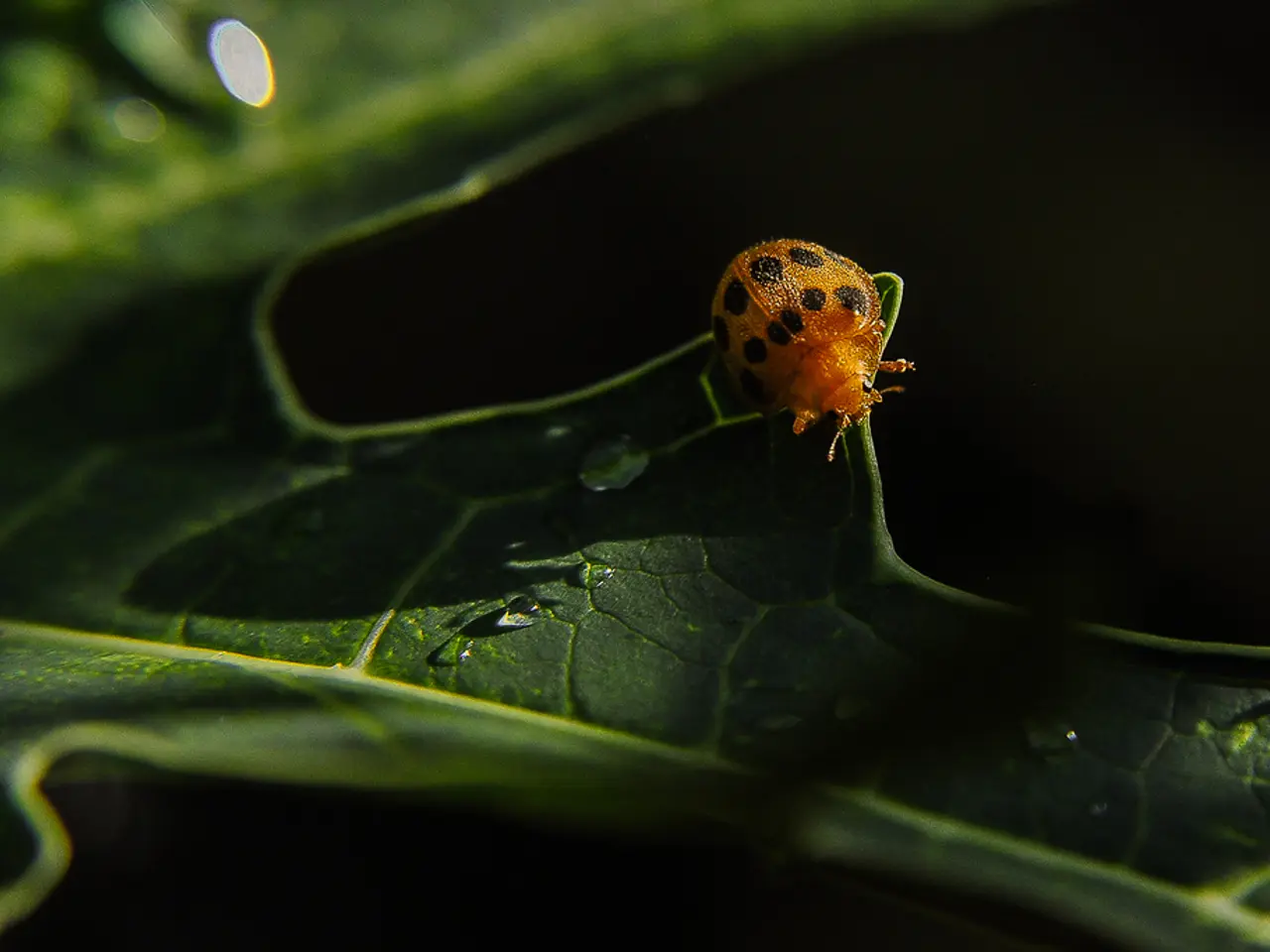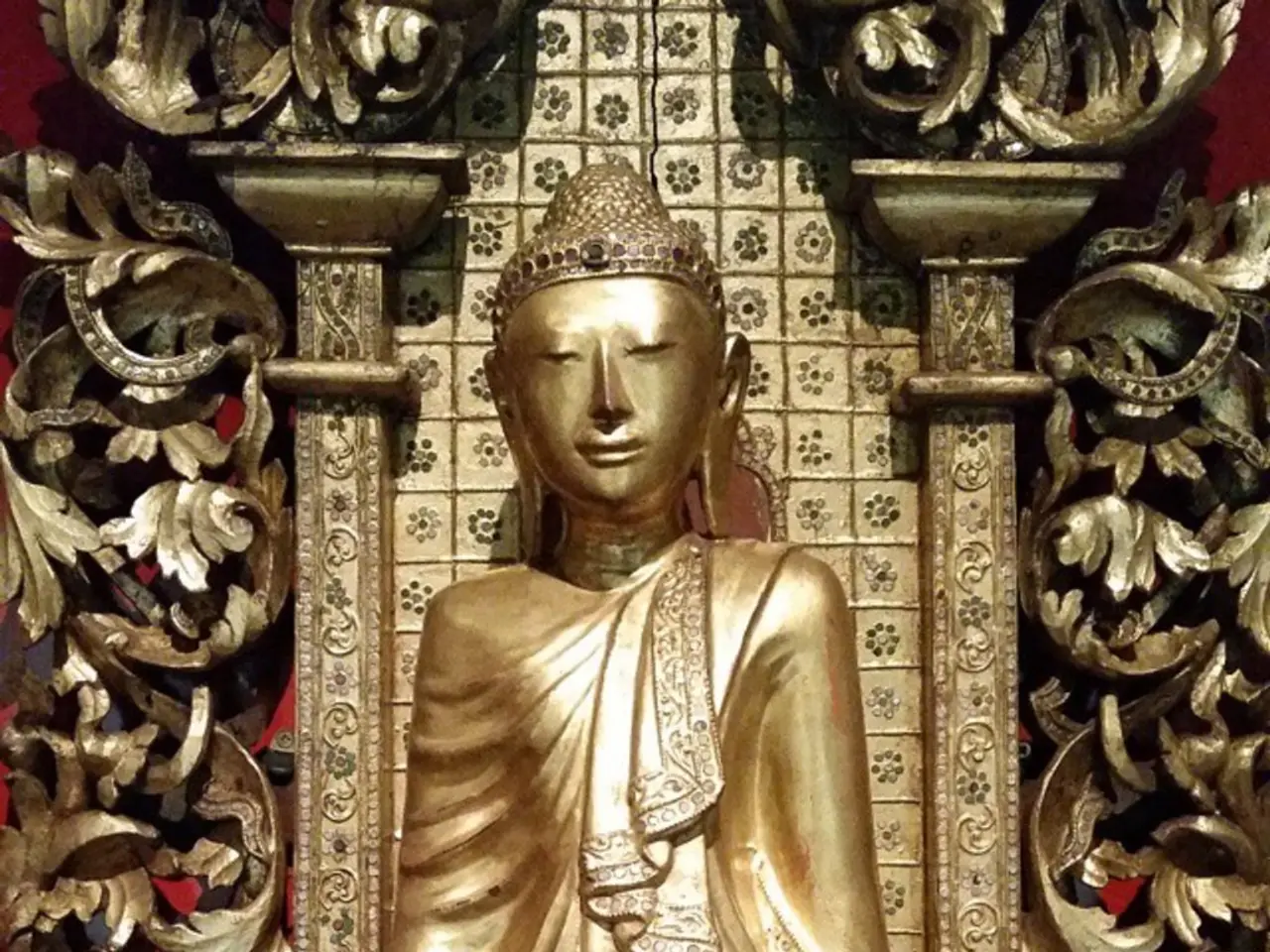Citrus Leaves Turning Curl: Common Reasons and Solutions for Reversal
Citrus leaf curl is a common issue that affects many citrus tree owners. This condition can be caused by a variety of factors, including pests, environmental stress, and nutrient deficiencies.
Pests such as whiteflies, aphids, mites, scale, mealybugs, citrus psylla, lemon butterfly larvae, and citrus leaf miners are frequent culprits. These insects feed on leaves or new growth, causing distortion and curling by damaging leaf tissues or transmitting diseases. For example, aphids and psyllids suck sap, stunting growth and curling leaves, while leaf miners cause mining that curls and browns leaves.
Drought, a common environmental stress, is another cause of leaf curl. When citrus trees are not watered sufficiently, they may curl their leaves as a means to reduce water loss. Temperature extremes and wind stress can also cause leaf curling due to plant stress.
Nutrient deficiencies, particularly in magnesium and manganese, have been linked to leaf curl symptoms. These deficiencies affect leaf health and structure.
To address citrus leaf curl due to pests and environmental issues, several treatments can be implemented. Pest control measures include the use of registered insecticides such as imidacloprid, thiamethoxam, or cyantraniliprole to control pests like psyllids and aphids. Copper-based fungicides can be used for fungal or bacterial leaf spots often associated with leaf curl. Mites can be controlled with sulfur-based miticides, applied during cooler parts of the day to avoid leaf damage. Biological controls, such as parasitic wasps (for psyllids), ladybird beetles (for aphids), and predatory mites (for rust mites), can also be used to reduce pest populations naturally. It's essential to rotate pesticides and follow label instructions carefully to prevent resistance buildup.
Environmental management involves regular and adequate watering to alleviate drought stress, protecting trees from extreme temperature fluctuations and wind stress by using shade or windbreaks if necessary, and ensuring balanced fertilization, especially correcting magnesium and manganese levels if deficiencies are identified.
Cultural practices such as removing and destroying heavily infested or diseased leaves, maintaining overall tree health with proper nutrition and watering, and applying an organic mulch around the citrus plant can help the tree recover from drought stress.
It's crucial to identify the cause of citrus leaf curl before treatment. Citrus leaf miners, for instance, are difficult to treat successfully. Checking the soil pH and nutrient levels before fertilizing citrus trees can help ensure there aren't bigger problems.
In summary, citrus leaf curl results primarily from pest infestation and environmental stresses like drought and temperature extremes, with nutrient deficiencies also playing a role. Effective management combines targeted pesticide use, biological controls, proper watering, and nutrient management to correct these issues and prevent leaf curling.
Citrus plants are commonly found in patios, landscapes, and even indoors. If you notice your citrus tree showing signs of leaf curl, don't hesitate to take action to ensure its health and longevity.
References:
[1] University of California Agriculture and Natural Resources. (2021). Citrus Leaf Curl Virus. Retrieved from https://ucanr.edu/sites/citrusresearch/files/306921.pdf
[2] University of Florida IFAS Extension. (2020). Citrus Leaf Curl. Retrieved from https://edis.ifas.ufl.edu/pdffiles/CV/CV03000.pdf
[3] Texas A&M AgriLife Extension Service. (2021). Citrus Leaf Curl. Retrieved from https://texasaglife.tamu.edu/citrus/citrus-leaf-curl/
[4] Cornell University Cooperative Extension. (2021). Citrus Leaf Curl. Retrieved from https://blogs.cornell.edu/citrus/citrus-leaf-curl/
[5] California Citrus Quality Council. (2021). Citrus Leaf Curl. Retrieved from https://www.citrusquality.org/citrus-leaf-curl/
Engaging in gardening, especially home-and-garden activities, might lead to the addition of a citrus tree to one's lifestyle. In such a case, it's important to be aware that issues, like citrus leaf curl, can affect these plants. This condition can be caused by various factors, including pests, environmental stress, and nutrient deficiencies.




